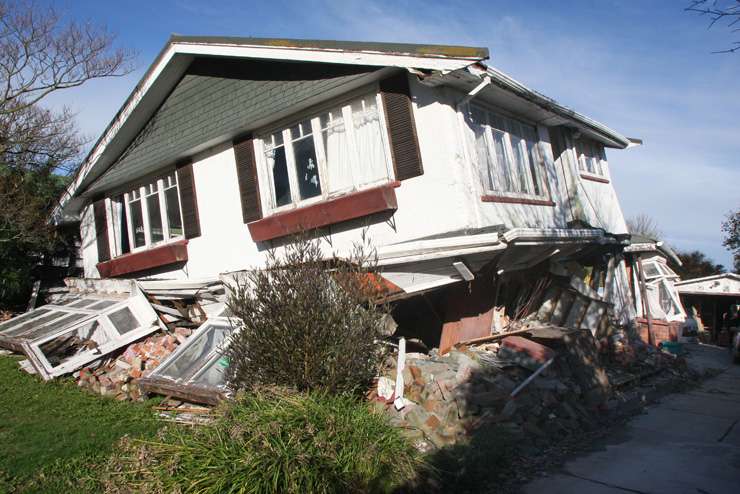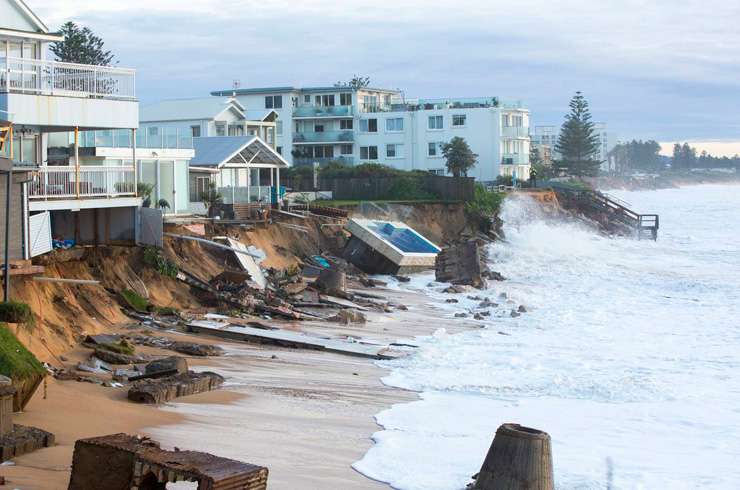One of the big risks faced by buyers and homeowners is they may not be able to get insurance to cover risks such as flooding if they are in an area at risk of the effects of climate change.
Areas such as the West Coast and Nelson are particularly at risk. Currently, there are a few homes in New Zealand that have difficulty getting what’s known as all-risks insurance. That may change. Companies could choose to exclude cover for flooding or make it an expensive add-on.
Or, as TOWER has already done they can move to a risk-based pricing model. Homes at greater risk pay higher premiums rather than the risk being spread across all homeowners.
Insurers are beginning to use the services of firms such as Risk Management Solutions (RMS) that have a natural hazard model, which can identify hazards.
Start your property search
TOWER chief executive Blair Turnbull says New Zealand is the second riskiest country in the world when it comes to natural disasters.
In November 2021, the insurer launched what it says is a New Zealand first tool, which rates the flood and earthquake hazards of homes.
The model predicts a low, medium, high or very high rating for every residential address in New Zealand.
“It more accurately reflects properties’ potential flood risks and the estimated cost of replacing or repairing flood damage,” Turnbull says.

Damage caused by the Canterbury earthquakes. NZ is the second riskiest country for natural disasters. Photo / Geoff Sloan
Turnbull says the pricing impacts are:
● Nearly 90% of policy holders have received a reduction in the flood risk portion of their premiums.
● Around 10% of customers are experiencing an increase in this portion of their premiums with the majority of these increases less than $50 a year.
● A very small portion of customers (about 1%) will receive a high rating and see an increase greater than $301 a year.
In addition to its earthquake and inland flood-risk, TOWER is looking to incorporate coastal erosion and coastal flooding risks into its model next year, with further climate risks to follow in future.
It’s up to homeowners to make sure they know what their policy covers. When it comes to climate change they can’t say they haven’t been warned.
Although many people don’t want to know about the risk to their homes, better-resourced councils, as well as government agencies such as EQC , NIWA, and the NZ SeaRise programme, are making efforts to bring the risks to people’s attention.
Insurance Council of New Zealand chief executive Tim Grafton says: “For those looking to build or buy a property, it really is a good idea to think about the long-term exposure to hazards.
“As the maintenance of insurance is typically a condition of having a mortgage, it really does pay to think over at least a 25-year horizon.
“Any resilience solutions need to be practical and cost-effective. They may change over time as specific and emerging risks evolve.
“For some, this might mean investment in natural systems to protect against flood; others might look to invest in stop banks or other man-made infrastructure, including much-enhanced storm water systems.
“Others might look at what’s practical and cost effective and conclude that not doing much ahead of managed retreat is the most sensible option.”
Another industry that is sitting up and taking notice of the effect of climate change on property is valuers.
Valuer Patricia Kuczynska says how the industry adapts to climate change, how property values might be impacted, and the future approach to valuing property are all of great concern to PINZ/NZIV valuers.
“Definitely, the long-term physical and transition consequences of climate-related risks may impact appeal of certain asset types including older properties and properties affected by increased rates of flooding.

Damaged waterfront properties in Sydney, Australia, in 2016. Coastal properties could be a riskier buy as a result of climate change. Photo / Damian Shaw
“These are particularly vulnerable asset classes,” says Kuczynska, who points out market value and investment value assessments by valuers refer to conditions and assumptions at the valuation date.
“However, risk is an important indicator as any property investment decision involves taking into account the risk associated with that investment.”
She says valuers need to include government regulations and legislation relating to the natural hazards, climate change and energy efficiency including the Building Code updates and the Government’s National Adaptation Plan, in their assessments.
How climate change might affect property valuations is an emerging field. In an earlier article in the industry magazine Property Professional, Kuczynska says valuers must take into account in their assessments:
1. Risks to buildings due to extreme weather events, drought, increased fire weather and ongoing sea-level rise.
2. Risks to potable water supplies (availability and quality) due to changes in rainfall, temperature, drought, extreme weather events and ongoing sea-level rise.
3. Transition risks from policy changes and economic consequences of efforts being made towards decarbonisation of the economy.
She notes that valuers’ independence and advocacy position makes them arguably less biased than many other industry participants and advisors saying valuers are as well placed as anyone to comment on the economic impact of the foregoing risks.
















































































